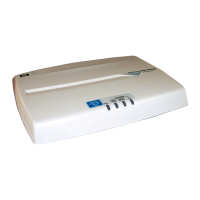7-14
Wireless Security Configuration
Wireless Security Overview
WPA-802.1X
1. Enable WPA Security.
2. Enable WPA and/or WPA2.
3. Enable Pre-authentication.
4. Set the Authentication
Server and Protocols—TKIP,
AES, or both.
5. Set the Radius Key.
6. Allow Non-WPA stations.
security <wpa-802.1X>
wpa-allowed
[no] wpa2-allowed
[no] rsn-preauthentication
[no] wpa-cipher-tkip
[no] wpa-cipher-aes
radius-accounting <primary | secondary>
<ip <ip> | port <port> | key <key>>
radius<primary | secondary>
WPA supported
station required.
If there is a mix of
stations, some
supporting WPA2
and others
supporting the
original WPA,
configure for both
(set both wpa/wpa2
allowed).
• When both TKIP and
CCMP authentication
methods are set, both
TKIP and AES stations
can associate with the
access point. WPA
stations must have either
a valid TKIP or an AES
key to communicate.
• For WPA2 wireless
stations to send pre-
authentication packets,
enable Pre-
authentication.
The AP 530 supports the following Extensible Authentication Protocol (EAP) methods: TLS, TTLS, MD5, and PEAP (MS-CHAP v2) when
configured to use an external RADIUS server for authentication. The AP 530 supports only PEAP (MS-CHAP v2) when configured to use the
built-in (local) RADIUS server.
To start, the access point is in the default configuration.
Conventions used:
Vertical bars separate alternative, mutually exclusive elements ( | ).
Braces enclose required elements ( < > ).
Italics indicate variables for which the user must supply a value when executing the command.
Configuring Encryption in the ProCurve Wireless Access Point 530
Encryption Methods and
Process
WLAN Interface Level Commands Additional
Requirements
Notes

